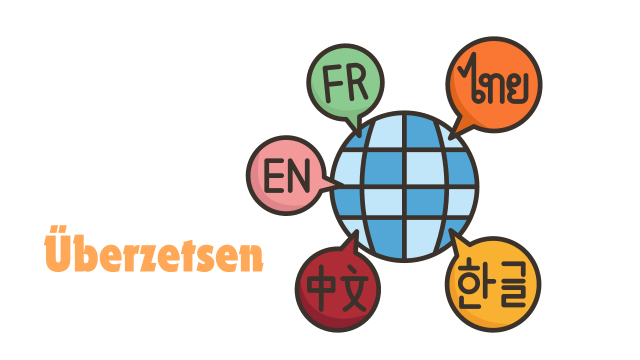In our increasingly globalized world, the ability to communicate across languages is more crucial than ever. The term “überzetsen,” which is the Dutch word for “translate,” encompasses the process of converting text or speech from one language to another. This task is not merely a linguistic exercise but a significant aspect of effective communication and business strategy. Accurate translation, or “überzetsen,” can make the difference between a successful international endeavor and a missed opportunity. This blog post will explore the importance of translation, the challenges involved, and best practices for ensuring high-quality translation.
Understanding the Role of Translation
Translation is the bridge that connects diverse linguistic communities, allowing for the exchange of ideas, culture, and commerce. The term “überzetsen” highlights the core function of translation: to render a message from one language into another while preserving its original meaning and intent. This process is essential in various fields, including literature, legal documents, technical manuals, and marketing materials. Without effective “überzetsen,” many global interactions would be hindered, leading to misunderstandings and missed opportunities.
Challenges in Translation
One of the primary challenges in “überzetsen” is maintaining the balance between literal translation and conveying the intended meaning. Literal translation often fails to capture the nuances and context of the original text, which can result in awkward or misleading translations. For instance, idiomatic expressions and cultural references may not have direct equivalents in other languages, requiring the translator to find creative ways to convey the same sentiment.
Another significant challenge is ensuring consistency across large projects. In legal and technical fields, where precision is paramount, even minor inconsistencies can lead to significant issues. Therefore, maintaining a consistent use of terminology and style is crucial. Professional translators often use glossaries and translation memory tools to aid in this task, ensuring that the translated text remains coherent and accurate.
Best Practices for Effective Translation
To achieve high-quality “überzetsen,” several best practices should be followed. Firstly, understanding the source material thoroughly is essential. Translators need to grasp not only the literal meaning of the text but also its context, tone, and purpose. This comprehensive understanding allows them to produce a translation that is both accurate and contextually appropriate.
Secondly, cultural sensitivity plays a crucial role in translation. Different cultures have varying norms and values, which can affect how a message is received. A translator must be aware of these cultural differences and adjust the translation accordingly to avoid misunderstandings or offense. For instance, marketing content that works well in one country might be inappropriate or ineffective in another due to cultural differences.
Thirdly, utilizing professional translation tools can enhance the quality and efficiency of “überzetsen.” Translation memory systems store previously translated segments, which can be reused in future projects to ensure consistency and speed. Similarly, terminology databases help maintain uniformity in specialized vocabulary across different documents.
Lastly, proofreading and revision are critical steps in the translation process. Even experienced translators can make errors, and a thorough review helps catch mistakes and improve the overall quality of the translation. Engaging a second translator or editor to review the work can provide additional assurance of accuracy and fluency.
The Impact of Accurate Translation on Business
In the business world, accurate translation is not just a matter of clear communication but also a key factor in success. For companies operating internationally, “überzetsen” is crucial for marketing, customer service, and legal compliance. Misinterpretations in marketing materials can lead to brand damage or lost sales, while inaccuracies in legal documents can result in costly legal disputes.
Consider the case of multinational companies that need to adapt their marketing campaigns for different markets. A direct translation of a slogan or advertisement may not resonate with the local audience or could even be perceived negatively. For example, a well-known brand once faced backlash when a slogan translated into another language inadvertently carried a negative connotation. By investing in high-quality “überzetsen,” companies can ensure their messages are culturally appropriate and effectively convey their intended impact.
Moreover, accurate translation is essential for providing excellent customer service in global markets. Customers who interact with a company in their native language are more likely to feel valued and understood. Effective translation of customer support materials, websites, and product documentation enhances user experience and builds trust.
The Future of Translation Technology
The field of translation is rapidly evolving with advancements in technology. Machine translation tools, such as Google Translate, have made it easier to access and understand foreign languages. However, these tools still face limitations in handling complex texts and nuanced meanings. Human translators remain indispensable for ensuring high-quality “überzetsen” in professional and sensitive contexts.
The future of translation will likely see continued integration of artificial intelligence and machine learning. These technologies promise to improve translation accuracy and efficiency, particularly for routine or high-volume tasks. However, the human touch will remain essential for dealing with intricate texts, cultural subtleties, and the creative aspects of language.
Conclusion
In summary, “überzetsen” or translation is a vital component of effective communication in a globalized world. It involves more than just converting words from one language to another; it requires understanding context, cultural nuances, and maintaining consistency. By adhering to best practices and leveraging technology, translators can produce high-quality translations that facilitate international interactions and contribute to business success.
As our world becomes increasingly interconnected, the role of translation will only grow in importance. Whether for business, personal, or academic purposes, accurate “überzetsen” will continue to be essential for bridging linguistic divides and fostering understanding.
FAQs
1. What is the meaning of “überzetsen”?
“Überzetsen” is the Dutch word for “translate.” It refers to the process of converting text or speech from one language to another.
2. What are the main challenges in translation?
The main challenges include maintaining the balance between literal and contextual meaning, ensuring consistency, and addressing cultural differences.
3. Why is cultural sensitivity important in translation?
Cultural sensitivity ensures that translations are appropriate and respectful of cultural norms, preventing misunderstandings and potential offense.
4. How can businesses benefit from accurate translation?
Accurate translation helps businesses effectively communicate with international audiences, maintain brand reputation, and provide excellent customer service.
5. What role does technology play in modern translation?
Technology, including machine translation and translation memory tools, enhances translation efficiency and accuracy but does not replace the need for human expertise in complex or nuanced texts.












